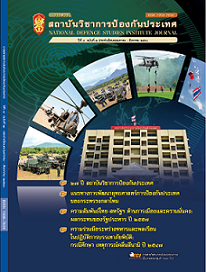พฤติกรรมของคนไทยในการป้องกันสมาร์ทโฟนจากภัยคุกคามทางไซเบอร์
Main Article Content
บทคัดย่อ
Abstract
Smartphone allows us to communicate anywhere and anytime, make high quality calls,
take photo, and share data. Amongst these reasons are their portable size and their enhanced
functionalities and their abilities to host many useful applications. With this reason, there are
2.1 billion people use smartphones in 2016, and this number continues increasing along with
economies (www.statista.com). Now-a-day, cyber attackers have been turning to smartphones.
The enormous use of smartphones makes them an attractive target for conducting security
attacks such as malware, identity theft, or ransomware. This issue led us to focus on studying
the abilities and behaviors of Thai people towards protecting their smartphones from cyber threats.
Objectives of this study are: (1) to investigate the abilities and behaviors of Thai people in protecting
their smartphones from cyber threats, and (2) to compare their abilities and protection behaviors
in protecting their phones from cyber threats, based on demographic differences and their
behaviors. The study is based on the Protection Motivation Theory (PMT), proposed by Roger, R.W.
in 1983, and used quantitative methodology to collect and analyze the data. A total of 720 samples
of smartphone users were collected, with cluster sampling technique, from all six regions of Thailand,
namely Bangkok and metropolitan, northern region, north-east region, eastern region, central region,
and southern region.
protection behaviors of Thai people is in good level, (2) females have less degree in protecting
themselves from mobile threats than males, (3) people of ages 51 – 60 have less degree in
protecting themselves from mobile threats than the other age-groups, (4) people whose
smartphones used to be infected by virus/malware have higher degree in protecting the
mselves rom mobile threats than the other, (5) people who use public wifi have higher
degree in protecting themselves from mobile threats than the other, (6) people who use money
transfer services via their phones have higher degree in protecting themselves from mobile
threats than the other.
Keywords: Smartphone, Mobile Threats, Protection Motivation Theory, Protection Behavior
Article Details
บทความ ภาพ ตาราง กราฟ ข้อเขียน หรือความคิดเห็นในวารสารฉบับนี้เป็นของผู้เขียนไม่ผูกพันกับสถาบันวิชาการป้องกันประเทศ และทางวิชาการแต่อย่างใด


